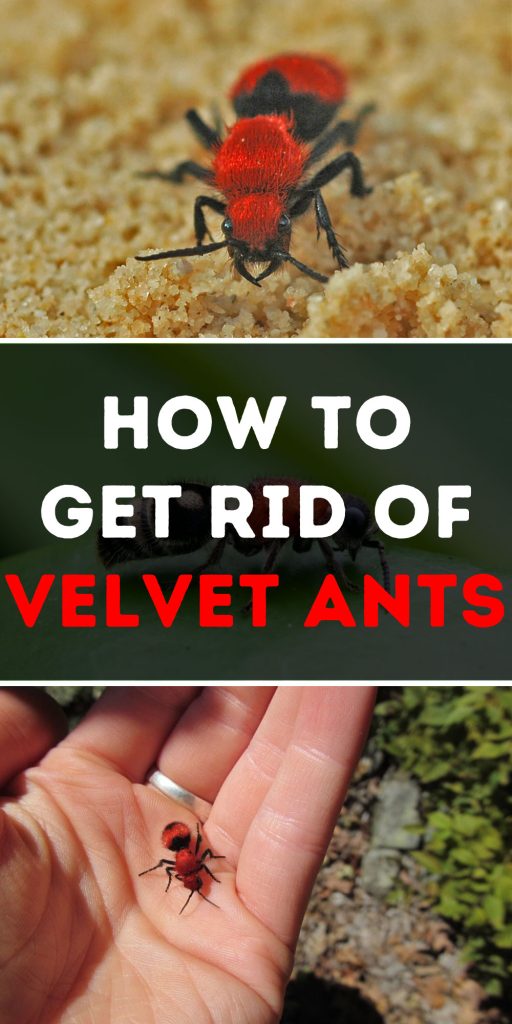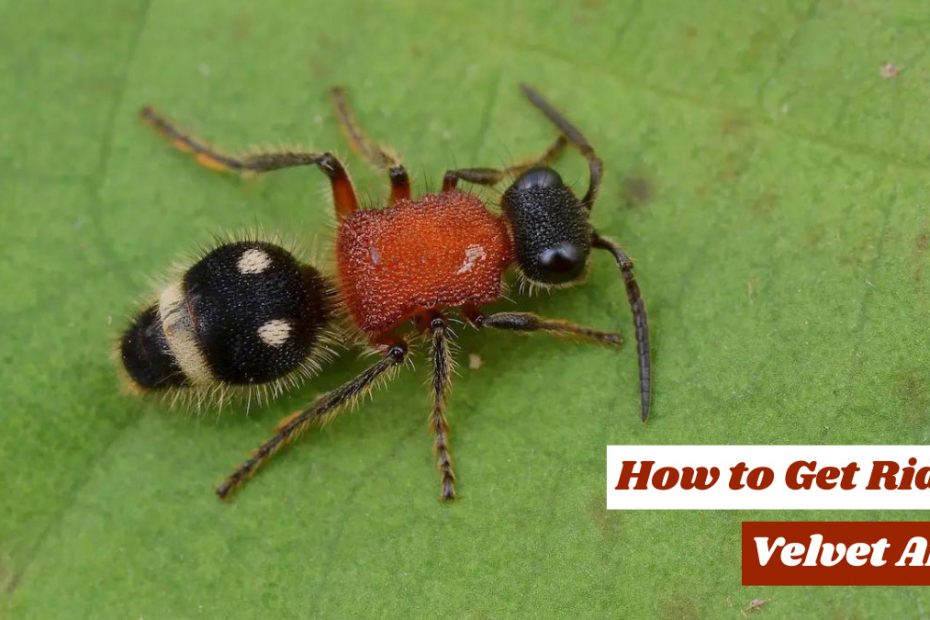Velvet ants, often mistaken for ants but actually a type of wingless wasp, can be a real nuisance in your yard. Known for their striking red and black colors and painful sting, these pests can make outdoor activities less enjoyable. If you’ve noticed these fuzzy invaders on your property, it’s crucial to take action before they become a bigger problem.
Getting rid of velvet ants involves understanding their habits and knowing the most effective methods to control them. By following a few strategic steps, you can reclaim your outdoor space and protect your family from unwanted stings. Ready to learn how to tackle these persistent pests? Let’s immerse.
Key Takeaways
- Identifying Velvet Ants: Velvet ants are actually wingless wasps, notable for their bright red, orange, and black appearance and painful stings. Spotting them early is crucial for effective control.
- Natural Remedies: Plant-based repellents like mint and lavender, introducing predators such as birds and lizards, and making environmental adjustments can naturally deter velvet ants.
- Chemical Solutions: Insecticides, such as permethrin and bifenthrin, can be effective for immediate results. Proper application and safety precautions are essential.
- Prevention Strategies: Regularly clearing debris, raising soil levels, planting dense ground cover, and sealing gaps help prevent velvet ant infestations.
- Regular Inspections: Conducting regular yard checks and maintaining a clean environment can help you spot velvet ants early and manage them before they become a bigger issue.

Understanding Velvet Ants
Velvet ants, often mistaken for ants, are actually wingless wasps with distinctive appearances and painful stings. Understanding them helps in effective control and management.
What Are Velvet Ants?
Velvet Ants:
- Scientific Classification: Belong to the family Mutillidae, commonly called velvet ants.
- Appearance: Males have wings, females are wingless, typically with bright red, orange, and black coloration. Their bodies are covered in dense hair, giving a velvety texture.
- Behavior: Solitary wasps, females often roam searching for host nests of ground-nesting bees and wasps, where they lay eggs.
Why Are Velvet Ants a Problem?
Velvet ants pose several concerns, particularly in outdoor spaces:
- Painful Sting: Their sting is highly painful, often referred to as the “cow killer” sting due to its intensity.
- Infestation Risk: They target the nests of other ground-nesting insects, potentially disrupting local ecosystems.
- Nuisance Factor: Their presence can deter outdoor activities, causing concern for those frequenting infested areas.
- Pet Threat: Pets exploring outdoors may disturb velvet ants, leading to painful stings and vet visits.
Understanding these characteristics aids in identifying and managing velvet ants effectively. Continue learning how to eliminate velvet ants and protect your outdoor spaces.
Identifying Velvet Ant Infestations
Identifying velvet ant infestations is key to managing these pests. Understand signs of their presence and know where to spot them in your surroundings.
Signs of Infestation
Detecting velvet ants requires vigilance. Several indicators can help you identify an infestation:
- Visible Sightings: Spotting individual velvet ants on the ground or in vegetation.
- Painful Stings: Experiencing sudden, sharp pain from a sting while outdoors.
- Host Nest Activity: Increased activity around nests of ground-nesting bees and wasps, which velvet ants parasitize.
- Unusual Ant-like Creatures: Observing ant-like insects with distinctive red, orange, and black coloration.
Where to Look for Velvet Ants
Velvet ants frequent specific areas. Search these common habitats to detect their presence:
- Ground-level: Velvet ants are often found scurrying across bare ground, sandy soils, and garden paths.
- Flower Beds: Check low-growing plants and flowers where they search for nectar.
- Host Nests: Inspect the vicinity of ground-nesting bee and wasp nests, as female velvet ants seek these sites for laying eggs.
- Outdoor Structures: Look under rocks, logs, and other debris where they might hide.
Understanding these key points aids in locating velvet ants, enabling prompt action to manage and eliminate infestations.
Natural Methods to Get Rid of Velvet Ants
Velvet ants, known for their painful sting and distinctive coloration, can be quite a nuisance. Fortunately, several natural methods can help you manage and eliminate these pests effectively.
Plant-Based Repellents
Certain plants can deter velvet ants due to their strong scents. Use these natural repellents to keep your outdoor spaces velvet ant-free:
- Mint: Its strong aroma repels many insects, including velvet ants.
- Lavender: Known for its pleasant smell, lavender is effective in keeping various pests away.
- Thyme: Can deter insects when planted around your garden.
- Citrus Peel: The oils in citrus peels act as natural insect repellants.
Plant these herbs and flowers in your garden or around places where velvet ants are commonly seen. Also, you can crush their leaves to release the oils and scatter them in affected areas.
Predator Introduction
Encouraging natural predators in your garden can help control velvet ant populations. Consider these predators:
- Birds: Birds consume various insects, including velvet ants. Planting shrubs and installing bird feeders will attract them.
- Lizards: Common garden lizards prey on many small insects.
- Moles: Though they can be a nuisance for your lawn, moles eat ground-dwelling insects.
By fostering a biodiverse environment, you can naturally lower velvet ant numbers without resorting to chemical solutions.
Environmental Adjustments
Making changes to your environment can deter velvet ants from settling in your space. Effective adjustments include:
- Clearing Debris: Remove fallen leaves, wood piles, and other debris where velvet ants might hide.
- Raising Soil Level: Improve drainage by raising soil levels in your garden, making it less attractive to ground-nesting insects.
- Planting Dense Ground Cover: Plants like clover and ivy can limit the spaces where hosts for velvet ants could nest.
- Sealing Gaps and Cracks: Inspect outdoor structures and seal any gaps or cracks.
Adjusting your environment not only discourages velvet ants but also creates a less hospitable space for many other pests.
These natural methods provide effective ways to manage velvet ant populations and safeguard your outdoor areas against these persistent invaders. Carry out these strategies to ensure a velvet ant-free environment.
Chemical Solutions for Velvet Ant Control
Chemical solutions provide a direct approach to tackling velvet ant infestations when natural methods may not suffice.
Insecticides and Pesticides
Insecticides are a targeted means to eliminate velvet ants on contact. These chemicals work by disrupting the nervous system or physically damaging the exoskeleton.
Key Categories:
- Contact Insecticides: Kill upon direct application. Examples: Permethrin, carbaryl.
- Residual Insecticides: Remain active for longer periods. Examples: Bifenthrin, cypermethrin.
Application Steps:
- Identify Hotspots: Locate areas with high velvet ant activity, such as ground nests.
- Read Instructions: Follow label directions carefully.
- Apply Chemicals: Use sprayers or dusters for precise application.
- Monitor Effect: Check treated areas for reduction in velvet ant activity.
Safety Precautions
When handling chemicals, safety is paramount to prevent harm to you, others, pets, and the environment.
- Wear Protection: Use gloves, masks, and long sleeves.
- Ventilation: Ensure good airflow when applying indoors.
- Keep Away from Pets and Children: Store chemicals securely.
- Follow Disposal Guidelines: Dispose of empty containers according to local regulations.
Chemical solutions serve as effective velvet ant control measures. Prioritize safety by strictly following guidelines and using protective gear.
Prevention Tips
Getting rid of velvet ants requires a proactive approach. Here are practical steps to prevent velvet ants from invading your outdoor spaces.
Habitat Modification
Modifying the habitat can significantly reduce the chances of velvet ant infestations:
- Clear Debris: Remove fallen leaves, dead wood, and other debris where velvet ants could hide.
- Raise Soil Levels: Level uneven areas in your yard that may hold water, as wet conditions attract ground-nesting bees and wasps.
- Plant Dense Ground Cover: Introduce low-growing plants like clover or thyme to cover bare ground, reducing space for velvet ants.
- Seal Gaps: Fill cracks in outdoor structures, including sheds and garages, to eliminate entry points for velvet ants.
Regular Inspections
Conducting regular inspections helps detect and manage velvet ant presence early:
- Check High-Activity Areas: Inspect areas where you observe frequent velvet ant activity, such as flower beds, host nests, and around outdoor structures.
- Look Under Debris: Examine under rocks, logs, and other debris for potential velvet ant hiding spots.
- Monitor Pets: Watch for signs of stings on pets, which indicate velvet ant activity in your yard.
- Use a Flashlight: Search for velvet ants during low-light times when they are more likely to be active.
Regular habitat modification and inspections are essential for effective velvet ant prevention. By maintaining a clean, sealed environment and staying vigilant, you can create a less hospitable space for these insects.
Conclusion
Effectively managing velvet ants requires a blend of identification, natural methods, and chemical solutions. By understanding their behavior and habitat preferences, you can take proactive steps to minimize their presence in your outdoor spaces. Implementing natural repellents, encouraging predators, and making environmental adjustments can significantly reduce velvet ant populations. When necessary, using insecticides with proper safety precautions offers a direct approach to control. Regular inspections and habitat modifications are key to preventing future invasions. With these strategies, you can maintain a safer and more comfortable outdoor environment free from the nuisance of velvet ants.
Frequently Asked Questions
What are velvet ants?
Velvet ants are actually wingless wasps from the family Mutillidae, often mistaken for ants due to their appearance.
Why are velvet ants called “cow killers”?
Velvet ants are nicknamed “cow killers” because of their extremely painful sting, although it is not fatal.
How can I identify a velvet ant infestation?
Signs of a velvet ant infestation include visible sightings, painful stings, increased activity around host nests, and their distinctive red, orange, and black coloration.
Where do velvet ants typically live?
Velvet ants often inhabit ground-level areas, flower beds, host nests of ground-nesting bees and wasps, and outdoor structures.
What natural methods can control velvet ants?
Natural methods include using plant-based repellents like mint, lavender, thyme, and citrus peels, and encouraging natural predators such as birds, lizards, and moles.
How can I make my yard less hospitable to velvet ants?
To create a less hospitable environment, clear debris, raise soil levels, plant dense ground cover, and seal gaps in outdoor structures.
Are chemical solutions effective for controlling velvet ants?
Yes, insecticides and pesticides can be effective, particularly contact and residual types. Proper application steps and safety precautions are crucial.
What precautions should I take when using chemical insecticides?
Follow guidelines carefully and use protective gear to ensure safety for humans, pets, and the environment when handling chemicals.
How can I prevent velvet ant invasions?
Prevent invasions by modifying habitats, conducting regular inspections of high-activity areas, monitoring pets for stings, and searching during low-light times.
Do velvet ants pose a threat to pets?
Yes, velvet ants can sting pets, causing pain and discomfort. Itâs important to monitor pets and prevent them from accessing known velvet ant habitats.
